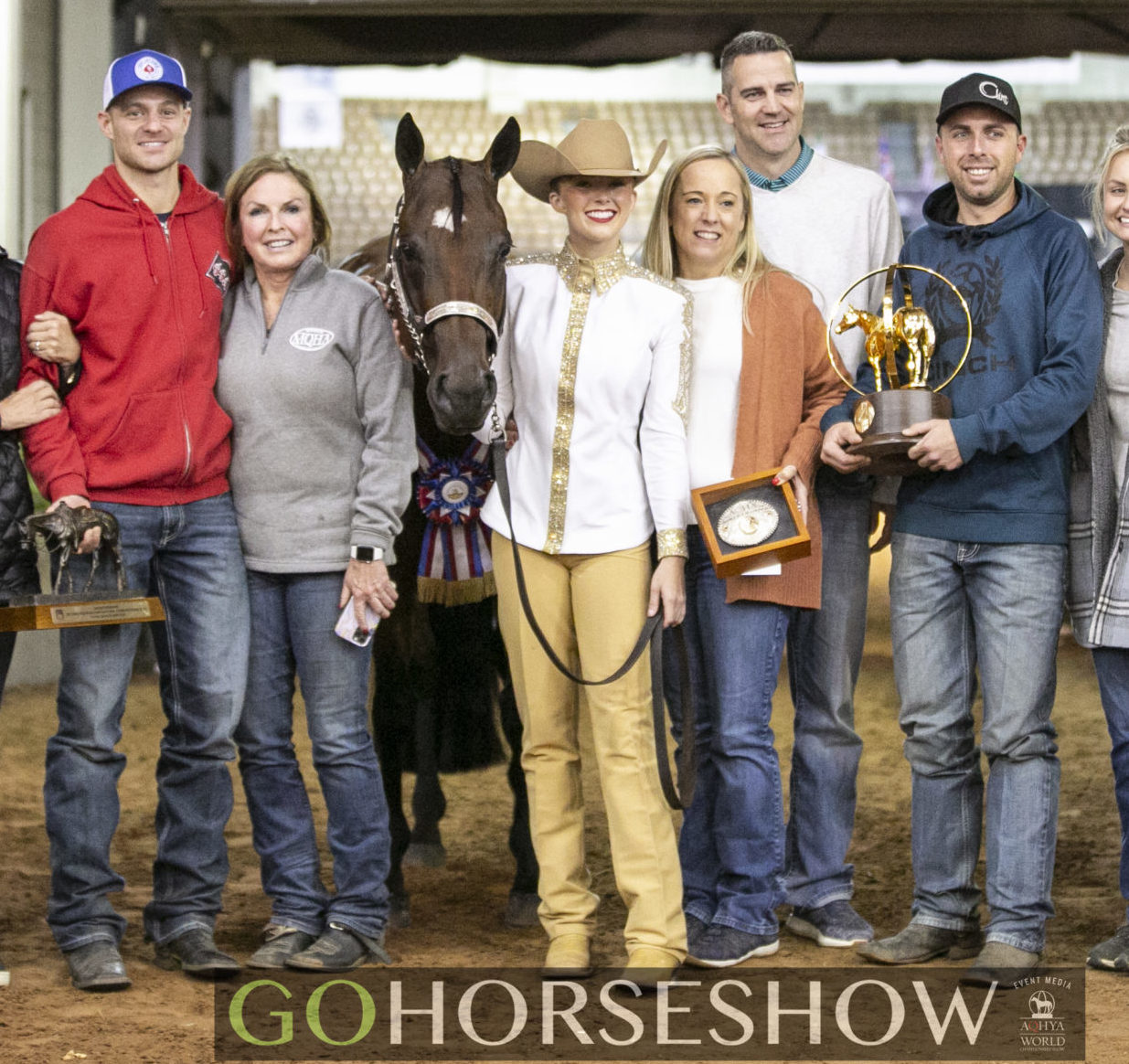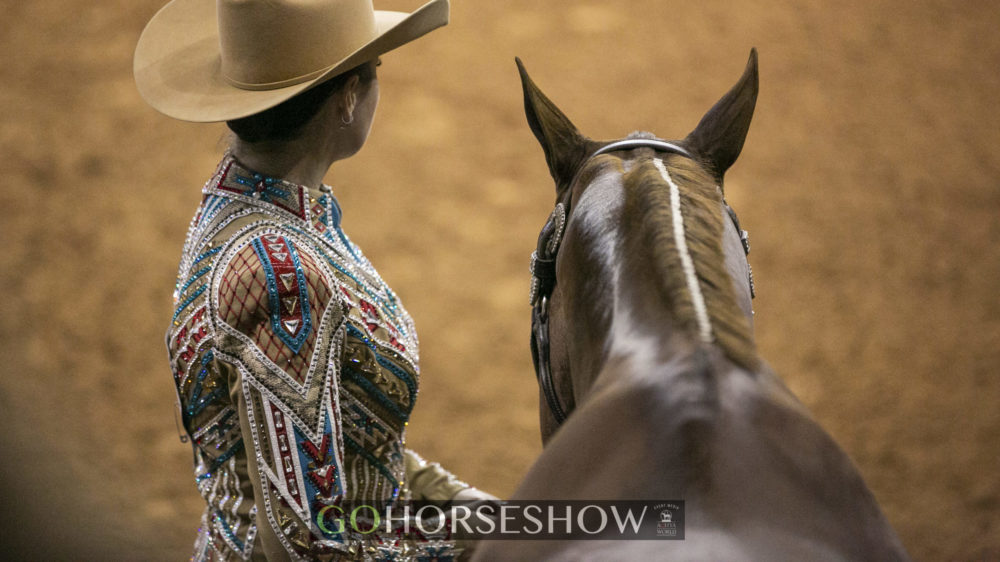In many ways, showmanship classes give competitors the opportunity to showcase the highest level of partnership between an exhibitor and their horse. Mastering the event requires intense attention to detail, an appreciation for precision, and an equine partner capable of rising to the physical and mental challenges that showmanship presents.
When mastered, an exhibitor and horse will perform a showmanship pattern with the appearance of ease, no matter the realistic complexity of the series of maneuvers. However, maintaining the effortless look necessary in the showmanship arena becomes challenging when an exhibitor is tasked with working alongside a sluggish, unwilling partner.
GoHorseShow spoke with professional trainers Shannon Vroegh Walker and Kendra Weis, two highly accomplished showmanship pros, about strategies to help brighten up a dull showmanship horse.
Be cautious of over-working
Shannon Vroegh Walker, of Show Horses by Shannon, said that over-work can significantly cause dullness in a showmanship horse.
“I can’t preach it enough: work on them until they’re good, then stop,” Walker said. “Do not create a horse that doesn’t care anymore. If you need to school something, school it until it is good and then be done.”
Over-schooling a horse, whether on a specific maneuver or in the event as a whole, only creates a tendency in the horse to ignore the exhibitor’s requests. As a result, the horse will not have the “edge” that helps it keep pace with the handler throughout a flowing pattern. A solid, short practice is worth a lot more in preparation than a long, tiring session.
Similar to Walker’s warning against over-schooling, Kendra Weis of Twin Acres Ranch explained that over-working a horse physically before showing a showmanship class could lead the horse to be duller and more unresponsive.
“On my showmanship horses, I don’t longe them at all before showmanship,” Weis said. “I’ll make sure that they have some spark to them. I try not to get them tired at all.”
Letting a horse retain its physical “edge” by skipping longing will also help it retain the mental edge that is a crucial trait of an excellent showmanship horse.
Be conscious of your personal space
 Even if a horse is habitually dull, or just naturally more laid-back, if an exhibitor pays close attention to what they can do to help that horse, rather than blaming the horse, there is always the possibility of “waking it up” in showmanship.
Even if a horse is habitually dull, or just naturally more laid-back, if an exhibitor pays close attention to what they can do to help that horse, rather than blaming the horse, there is always the possibility of “waking it up” in showmanship.
Walker said that exhibitors should remain conscious of one of the foundational aspects of showmanship: that the horse should be following the exhibitor. Effectively leading a horse through a complex series of maneuvers requires an exhibitor to be intensely aware of their own space about their horse.
“The horse has to want to pay attention to you,” Walker said. “So, when you get that horse out in front of you and not let it lag behind you, that’s when it has to pay attention because it doesn’t know what you’re going to do next.”
She explained that when practicing, an exhibitor should try to “make the horse work more in front of you, even than you would when you go to show it.” By exaggerating the spacing demands in the warm-up, when an exhibitor relaxes their intensity as they perform a pattern in the show pen, the horse will naturally end up being in sync with the exhibitor.
Keep the routine fresh
 There are only a select number of maneuvers that a horse will be asked to do in a showmanship pattern at any given point. If a horse is constantly asked to perform those same maneuvers, it will likely become bored with its job. A bored horse is often also a dull horse.
There are only a select number of maneuvers that a horse will be asked to do in a showmanship pattern at any given point. If a horse is constantly asked to perform those same maneuvers, it will likely become bored with its job. A bored horse is often also a dull horse.
Weis said she takes this potential for boredom into account when training showmanship horses.
“I do different things with mine: I’ll back them along the rail, I have trail obstacles set up that I’ll back them through, figure-eights, serpentines,” Weis explained. “We throw different things like that in, so then they don’t get bored.”
One specific exercise that Weis uses is the pull turn, even though it is no longer included in the rulebook as a showmanship maneuver.
“Everything we do in showmanship is trying to keep the horse straight, and horses tend to curl their neck to you and throw their right shoulder out,” Weis said.
If a horse is leaning in its body, it will not be adequately balanced and will therefore be incapable of staying step-for-step with the exhibitor. Implementing the pull turn into showmanship training programs helps keep the horse’s body square through pivots and the rest of the pattern and offers a change in routine that helps prevent the horse from becoming bored.
Just because a horse is naturally more laid back, or may have become dull over time, does not mean that they are doomed to be a terrible showmanship partner. On the contrary, through conscious decisions about the type and quality of practice one does with their equine partner, a horse’s mental interest in its work can be stimulated, ultimately improving its performance as a showmanship horse.








